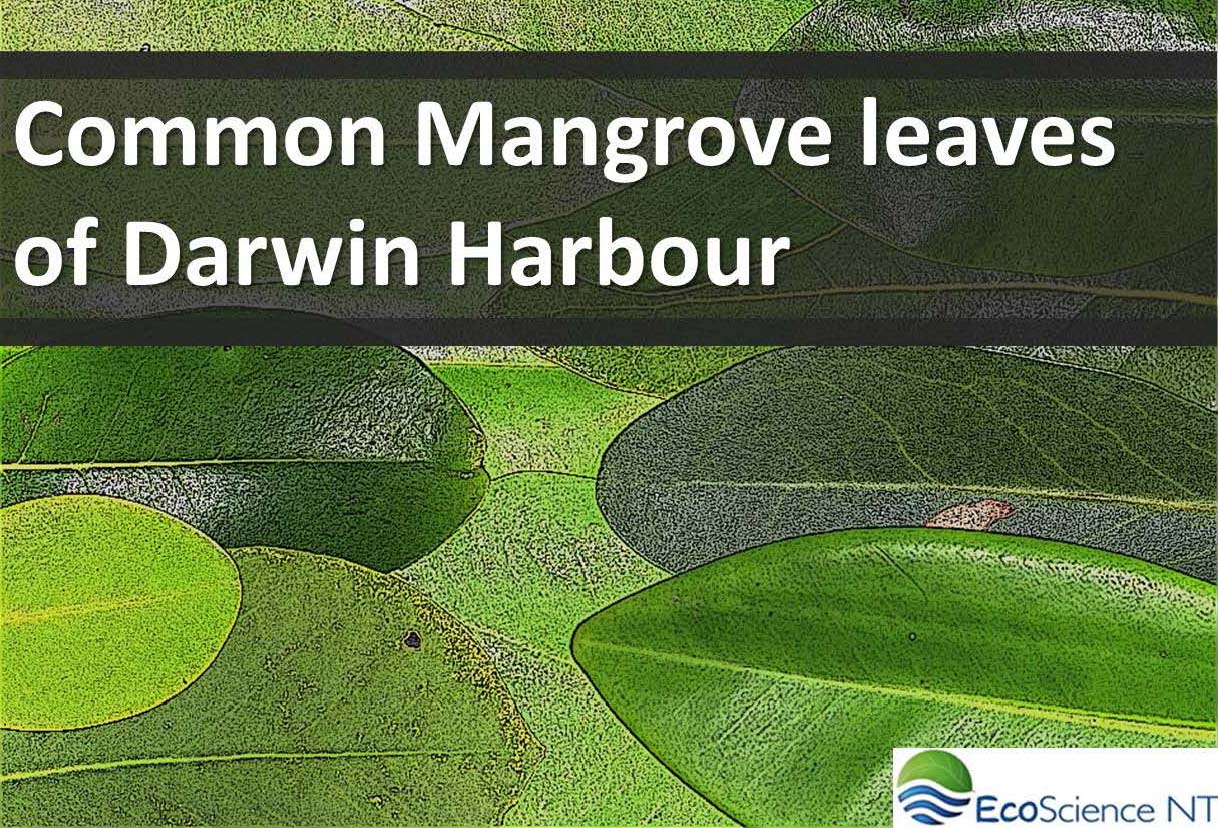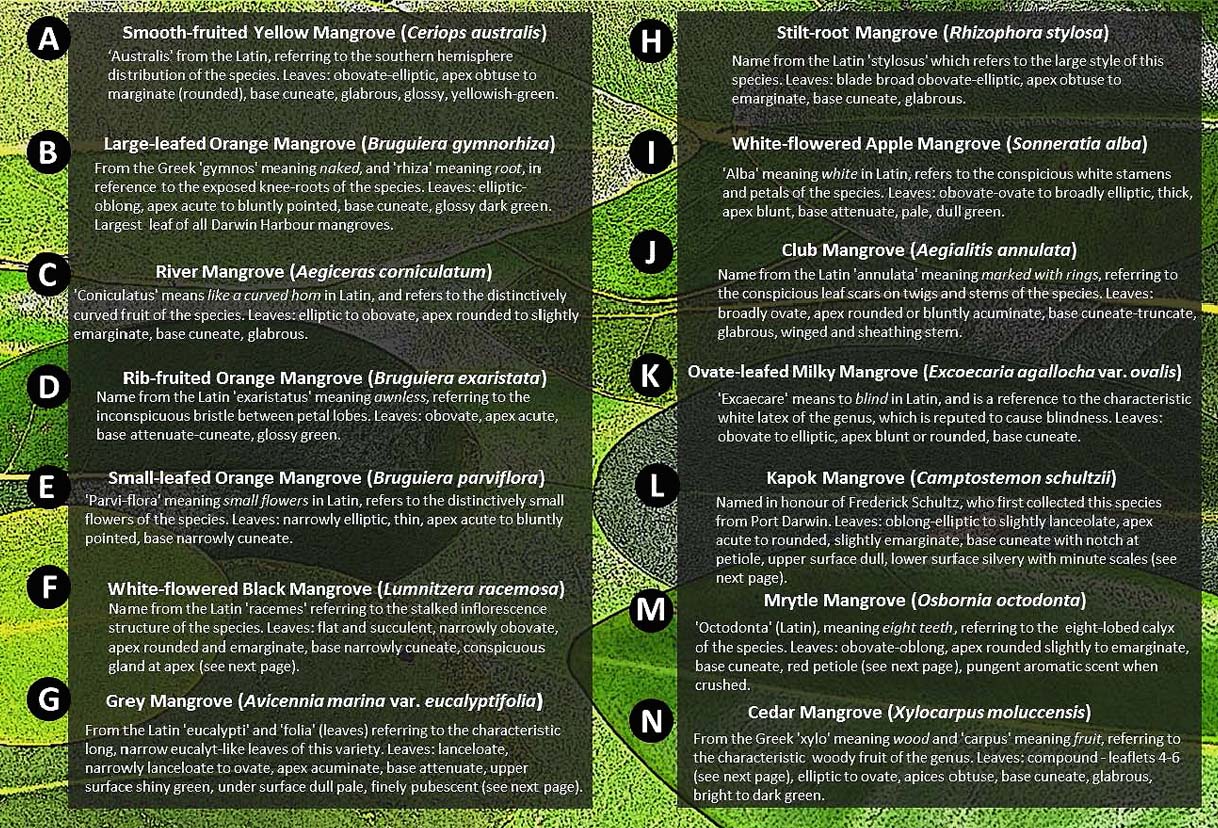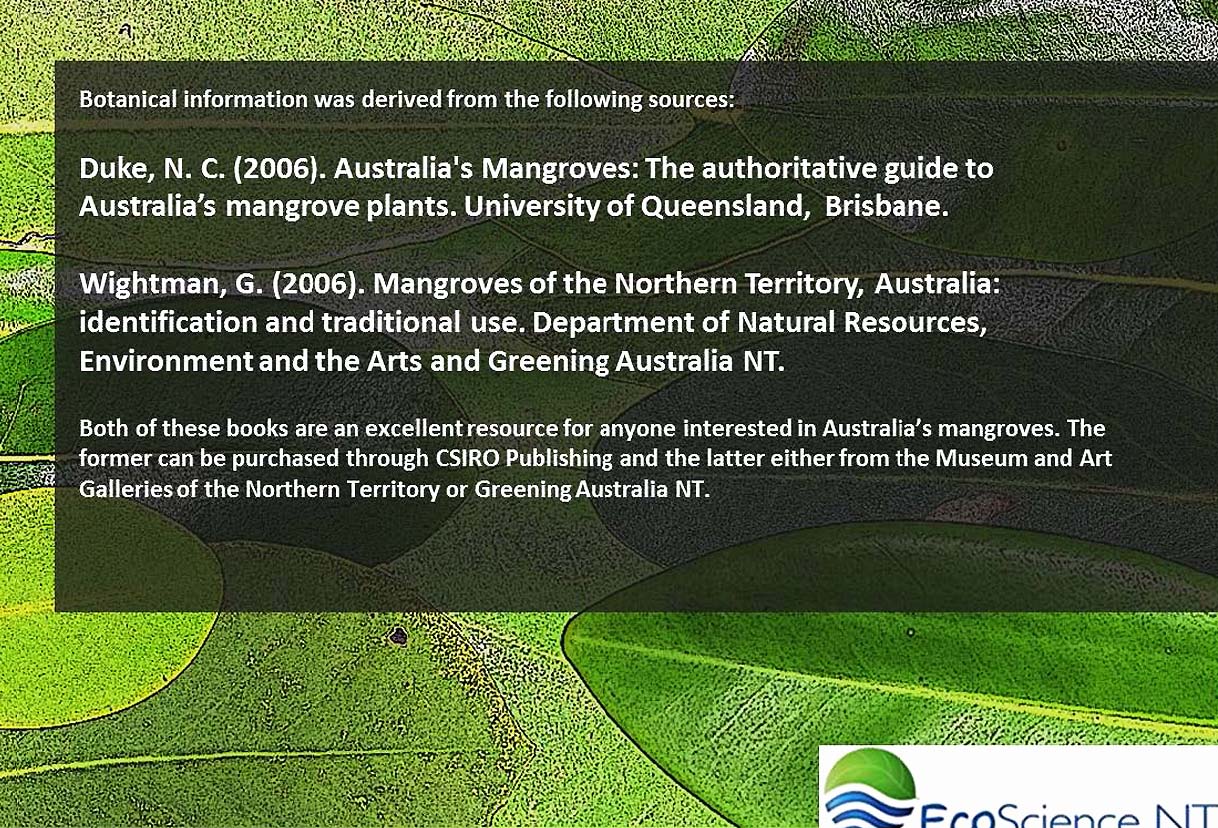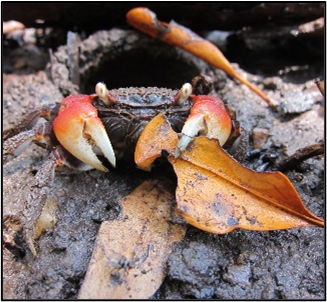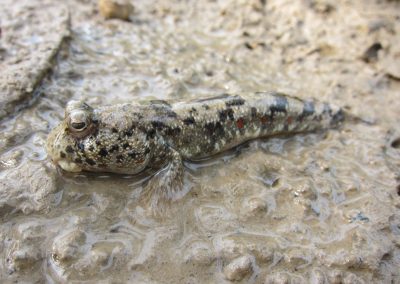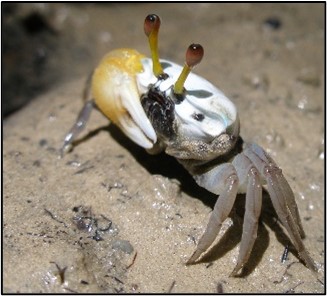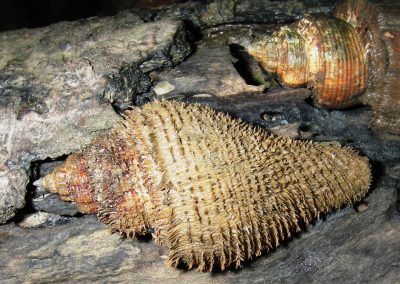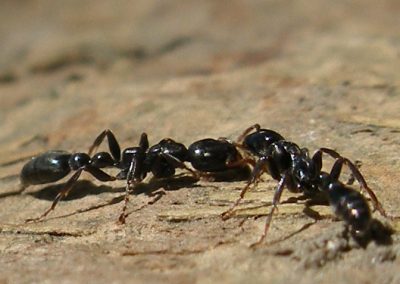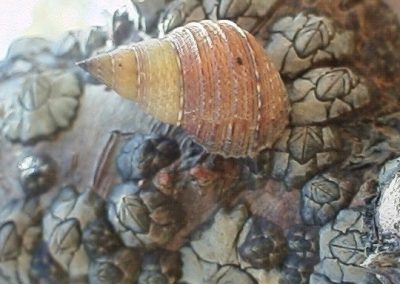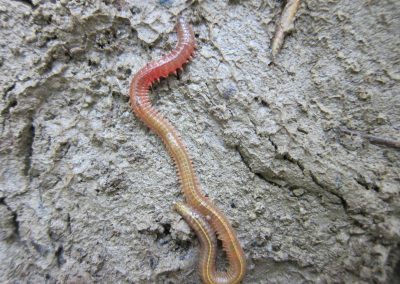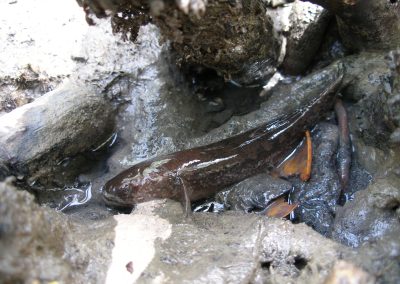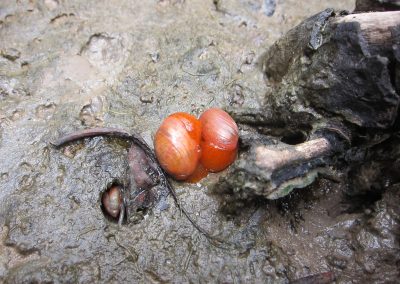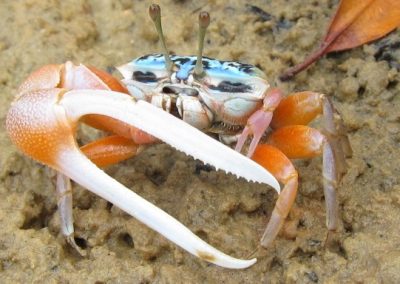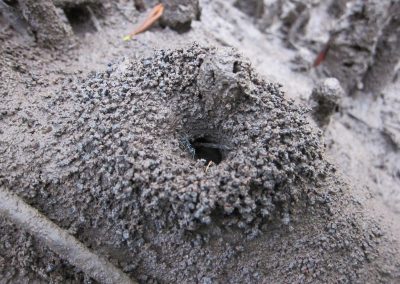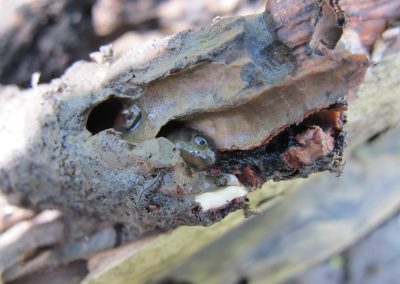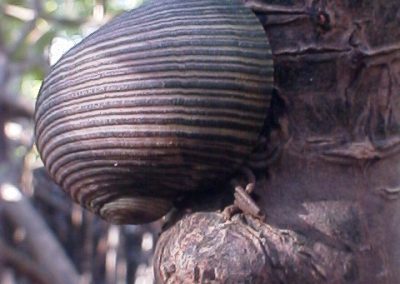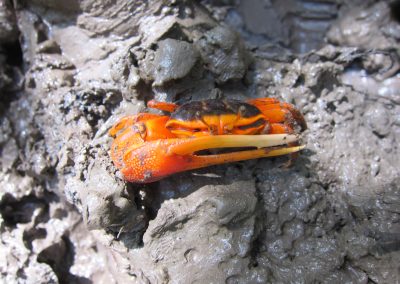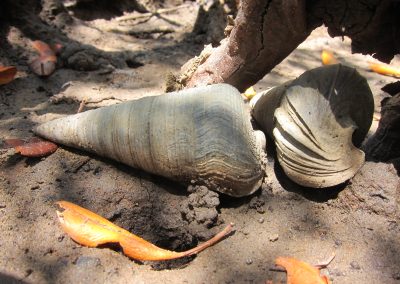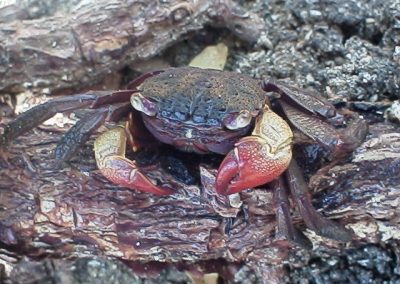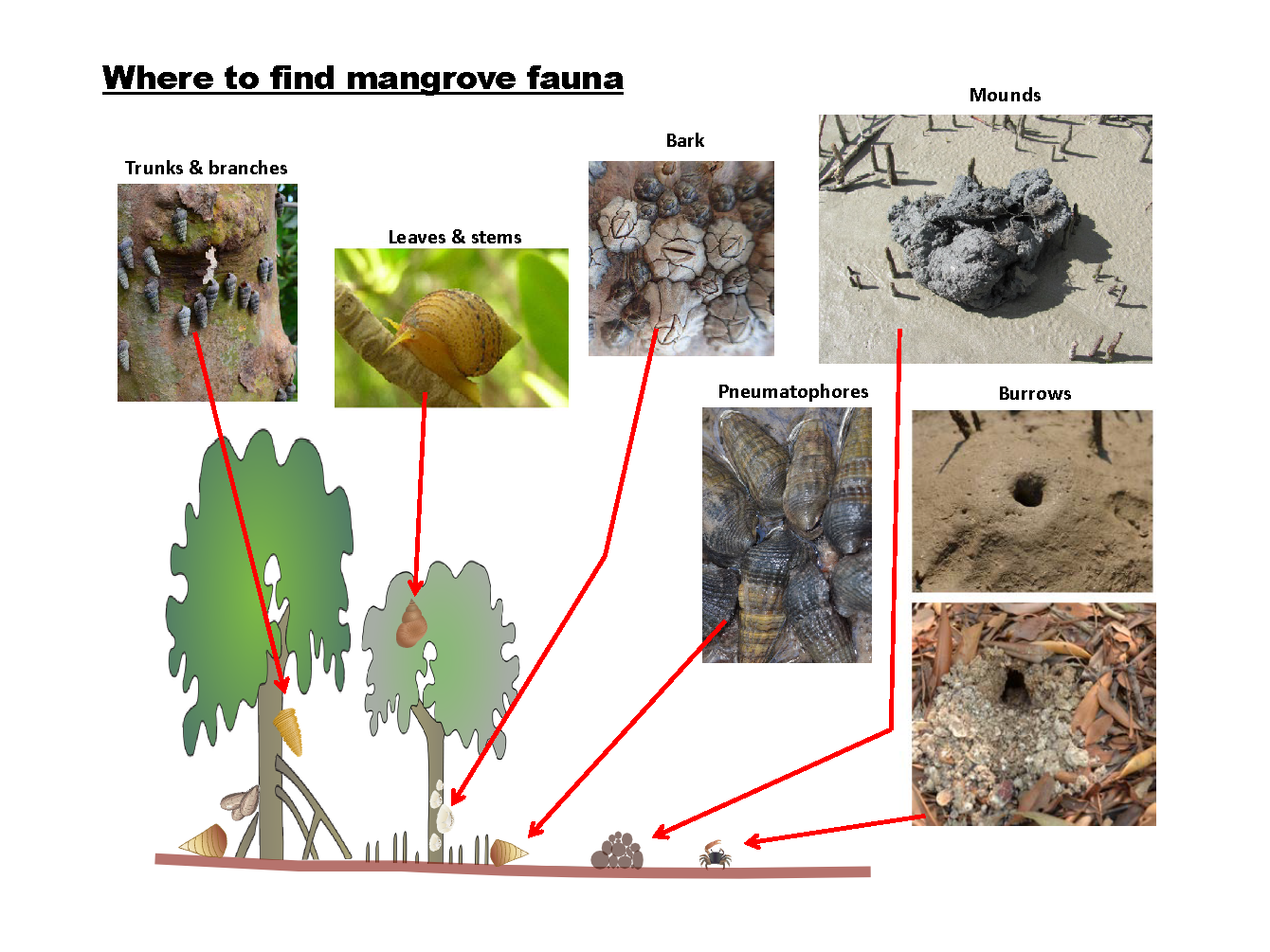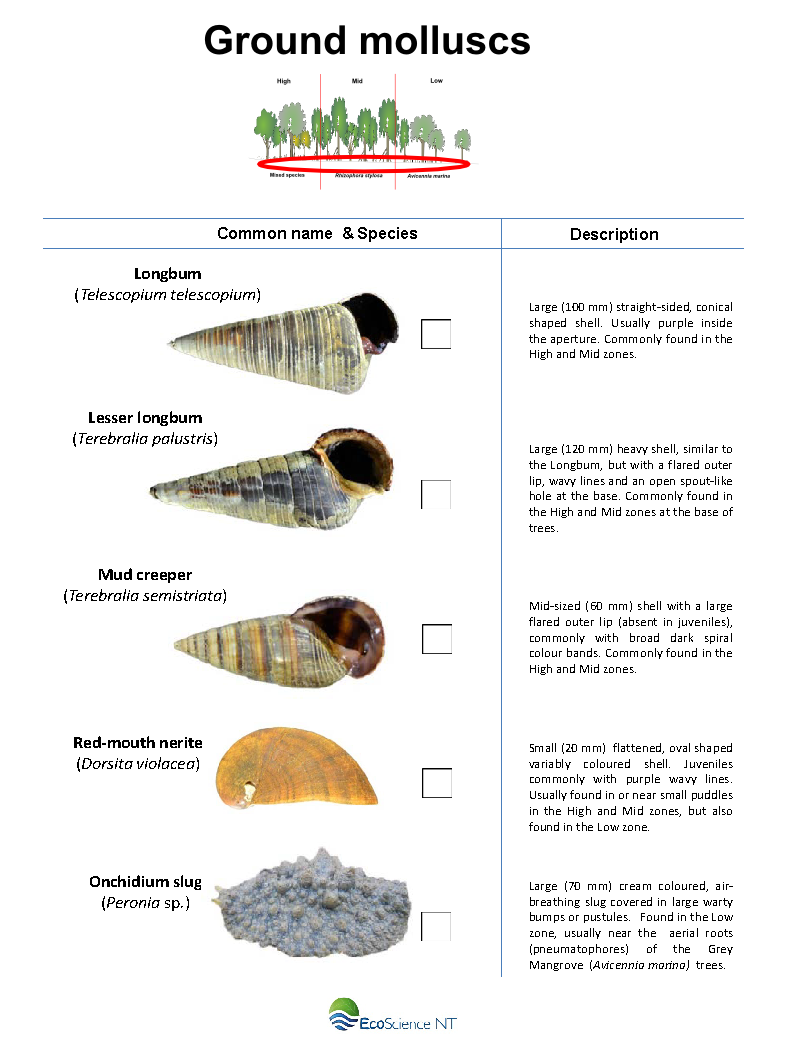Resources
MANGROVE FLORA
“Mangrove” is an ecological term that refers to the taxonomically diverse collection of about 70 plant species that grow along sheltered tropical and subtropical coasts, in intertidal environments. Mangroves occur between about mean sea level (0 m AHD) and the high tide mark and are actually land plants that have evolved unique specialisations to enable them to live on the edge of the sea. Botanically they comprise a bizarre collection of different families of land plants including the Myrtaceae (cf eucalypts and paperbarks), Rhizophoraceae, Meliaceae and Euphorbiaceae.
Mangroves are typically trees and shrubs but may also include other life forms such as palms, ferns and vines. Different researchers use different criteria to define a mangrove, hence the number of mangroves in an area varies depending on the definition used. Duke (2006) listed 32 mangrove species in the Nothern Territory. Wightmann (2006) in his book on the Mangroves of the Northern Territory, uses a broader definition and recognises 51 different mangrove species in the NT.
Australia is very rich in mangroves, with over 11,500 km2 or 6.4% of the global mangrove resource. They mainly occur in Northern Australia, which is floristically diverse (especially compared to the Americas which have only 2 mangrove species), with over 40 speices accounting for 57% of the world total (Duke, 2006).
They are fascinating plants with numerous interesting adaptations such as aerial and above ground roots (pneumatophores), salt glands, bouyant seeds and vivipary (where seeds germinate while attached to the parent tree). These and other distinctive features enable them to thrive in dynamic coastal environments subject to periodic tidal flooding, in substrates that may be waterlogged, anoxic, saline and unconsolidated.
Darwin Harbour
Northern Australia has some of the most extensive and least disturbed mangroves in the world. Darwin Harbour has one of the largest expanses of mangroves in the Northern Territory and includes approximately 20,000 hectares of largely intact mangroves – of some note, as mangroves are threatened globally, and continue to be lost at a rate of over 2% per year. Darwin Harbour is recognized as an important natural resource on both a regional and international scale.
The following identification guide was collated by Adam Bourke and can be downloaded as a pdf.
Although Darwin Harbour may contain over 30 different mangrove species, there are 14 common trees and shrubs, which can be identified using their leaf characteristics as follows:
Mangrove Leaves from Darwin Harbour, NT
MANGROVE FAUNA
Although mangroves are floristically poor in comparison with other tropical forests, mangroves are highly productive ecosystems, notable for their high primary productivity (producing copious amounts of organic material). When this material is broken down into detritus. or recycled by crabs into micro-particulates, it feeds into complex coastal food webs (secondary productivity). Many fish and crustacean species of subsistence and commercial importance utilise mangroves at some stage of their life cycle.
Occurring at the land-sea interface, mangrove communities support a broad range of marine and terrestrial organisms. Mangroves are habitat for a diverse array of birds, reptiles, mammals, numerous fish, crustaceans, molluscs, polychaetes and other worms, spiders, ants and myriad other insects. Mangroves are often listed as being centres of biological diversity and not surprisingly, the ecological significance of mangroves is well recognized.
Common Mangrove Fauna from Darwin Harbour, NT
Invertebrates are by far the most diverse and abundant component of mangrove faunal diversity. However the taxonomy of many invertebrates is poorly known and many mangrove areas are little studied.
Crabs, especially from the families Ocypodidae and Grapsidae, dominate most mangroves world wide. Molluscs are also very abundant and in Darwin Harbour are actually the most diverse invertebrate group.
Neosarmatium australilense – Leaf burying mangrove crab
Neosarmatium australilense – Leaf burying mangrove crab
Common mangrove fauna – field guides and identikit
Several educational mangrove field guides have been prepared by EcoScience for school excursions. These are fun and can help children to focus on finding and identifying mangrove animals while assisting teachers teaching primary school children about mangroves.
The following identification guides can be downloaded as a pdf.
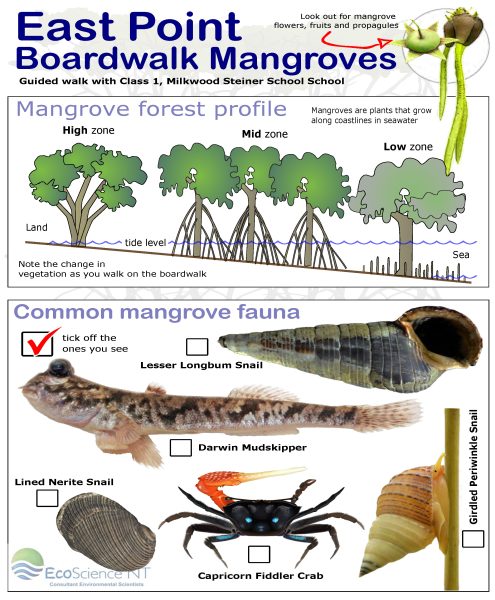
ADDITIONAL RESOURCES
Mangrove Food Web and Carbon Cycle
The following poster displays the extraordinary biodiversity of mangroves with a summary of the mangrove food web, based on detritus from mangrove leaves (top) and the importance of mangroves is storing or sequestering carbon (bottom) which is stored for long periods in deep anoxic muds and peat formed by mangrove forests.


